Rank Species | Genus Striga Higher classification Striga | |
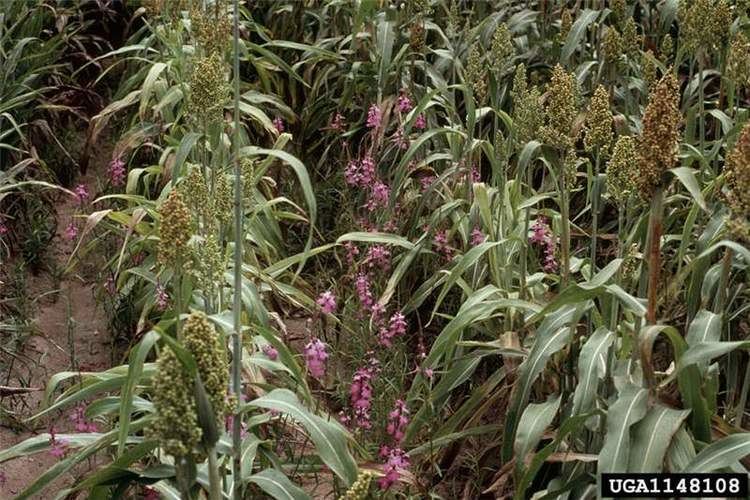 | ||
Similar Striga, Striga asiatica, Striga gesnerioides, Orobanche ramosa, Orobanche | ||
Striga hermonthica, commonly known as purple witchweed or giant witchweed, is a hemiparasitic plant that belongs to the family Orobanchaceae. It is devastating to major crops such as sorghum (Sorghum bicolor) and rice (Oryza sativa). In sub-Saharan Africa, apart from sorghum and rice, it also infests maize (Zea mays), pearl millet (Pennisetum glaucum), and sugar cane (Saccharum officinarum).
Contents
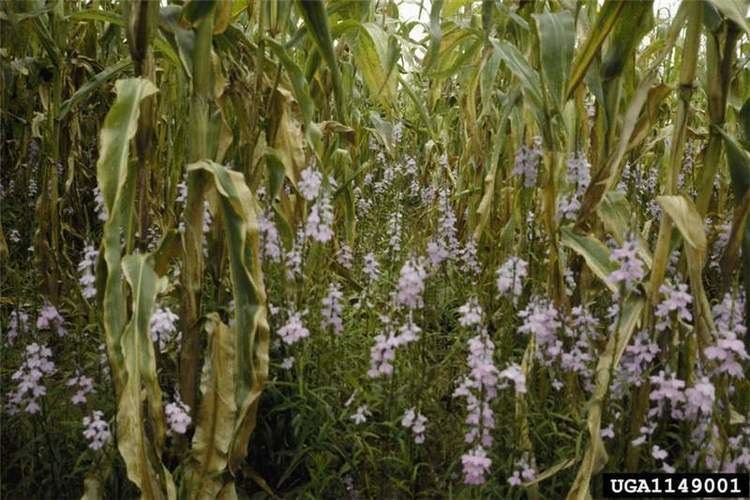
Striga hermonthica has undergone horizontal gene transfer from Sorghum to its nuclear genome. The S. hermonthica gene, ShContig9483, is most like a Sorghum bicolor gene, and additionally shows significant but lesser similarity to a gene from Oryza sativa. It shows no similarity to any known eudicot gene.
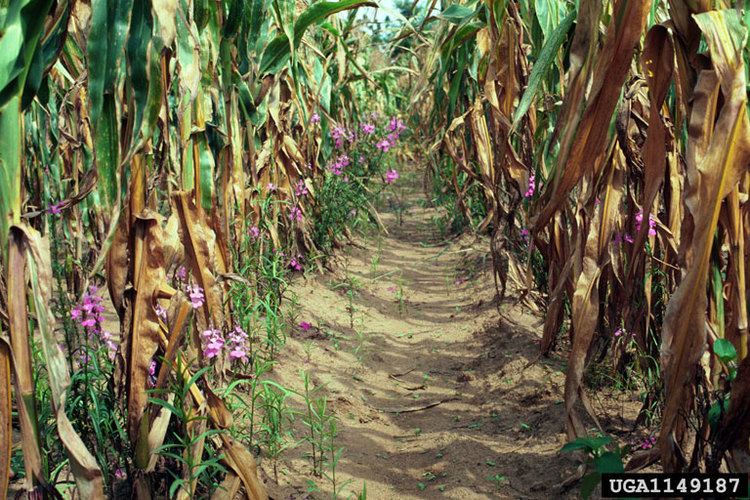
Host and Symptoms
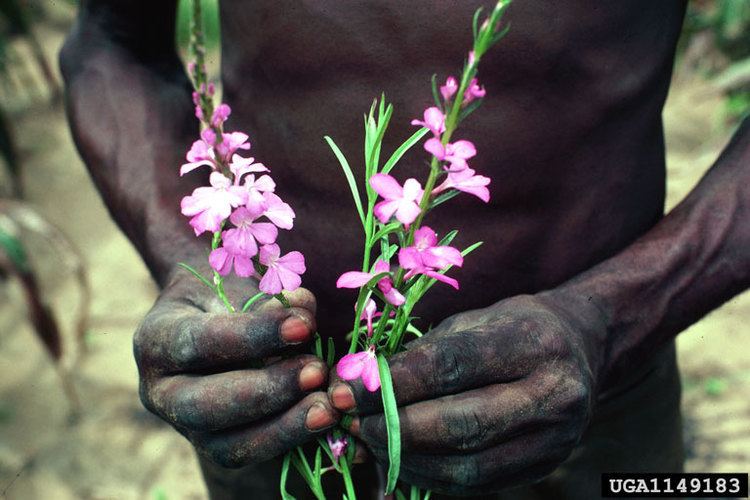
Purple witchweed infects a variety of grasses, and legumes in sub-saharan Africa including rice, maize, millet, sugarcane, and cowpea. The symptoms mimic that of drought or nutrient deficiency symptoms. Chlorosis, wilt, and stunting result from witchweed’s ability to extract nutrients from its host. Pre-emergence symptoms are difficult to diagnose secondary to their similarity to general lack of nutrients. Once emergence of the plant has taken place, it is usually too late to mitigate damage.
Parasitic Cycle
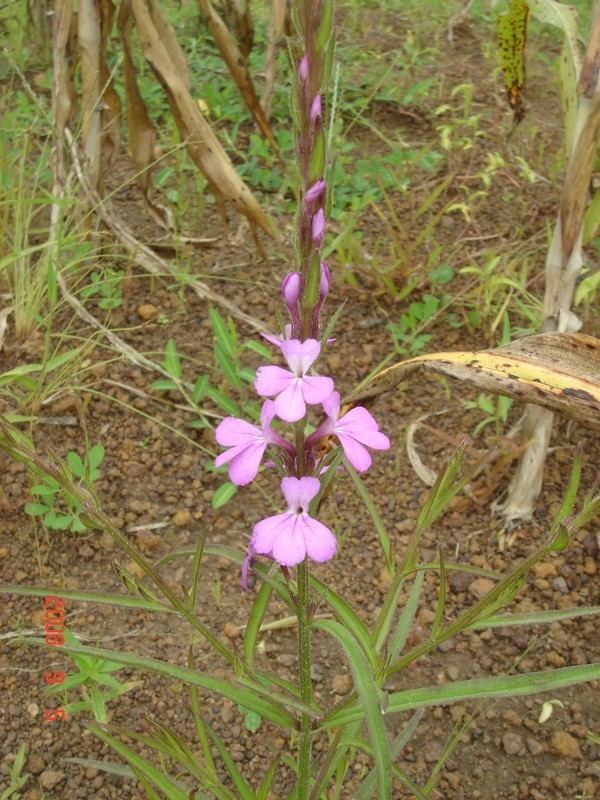
Seeds of witchweed overwinter in the soil after they are dispersed by wind, water, animal, or human machinery. When the environment is correct, and if the seed is within a few centimeters of the host root, it will begin to germinate. The germinating plant grows towards hormones, called strigolactones, released from the host root. The plant grows up the concentration gradient of these strigolactones. In the absence of strigolactone, the striga will not germinate. Strigolactone knockout plants have been used in an attempt to prevent infection by avoiding germination. Once in contact with the root, the witchweed produces a haustorium establishing a parasitic relationship with the plant. It remains underground for several weeks while extracting nutrients. The stem while underground is round and white. After this stage it emerges from the ground and rapidly flowers and produces seeds. The flowers self pollinate before opening. Post emergence the plant can perform photosynthesis to augment its metabolic demands.
Environment
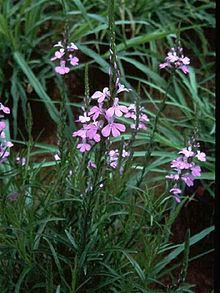
30-35 degrees Celsius is witchweed’s ideal climate for germination. In temperatures below 20 C the seeds will not germinate. Seeds can survive freezing temperatures. However the longevity of the seed is debated. Most say that under ideal conditions seeds can remain viable for up to 14 years, but a study conducted on more realistic environmental conditions demonstrated that wet soils greatly decrease the resilience of the seeds. At most in one year 74 % of viable seeds were lost secondary to wet soil.
Management
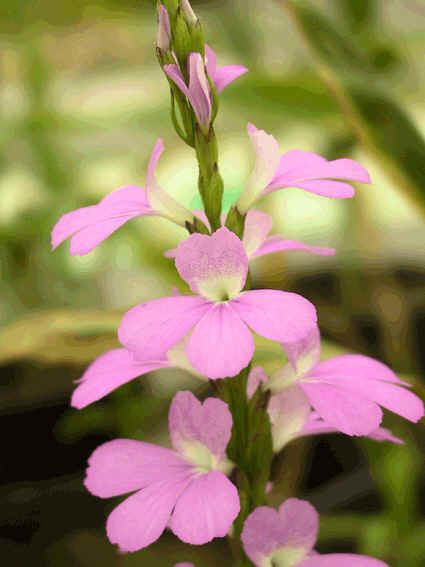
Witchweed is historically among the hardest parasitic plants to control. It has been found that Fusarium oxysporum may be used as a possible biocontrol of witchweed. Fusarium oxysporum is a fungus that is thought to infect the early vasculature of the Striga plant. A potential solution to Purple Witchweed for millet and sorghum crops is herbicide priming. When herbicide resistant seeds were soaked in herbicidal chemicals before planting, there was up to an 80% decrease in infestation. It has further been demonstrated that the use of nitrogen rich fertilizers reduces the witchweed infection rate. Although the mechanism behind this is not fully understood, it is thought that the abundance of nitrogen disrupts nitrogen reductase activity. This has a ripple effect, resulting in the dysregulation of the plant's light and dark cycle, resulting in the Striga's death.
Impact
In the late 1990s, "21 million hectares of cereals in Africa were estimated to be infested by S. hermonthica, leading to an estimated annual grain loss of 4.1 million tons".
